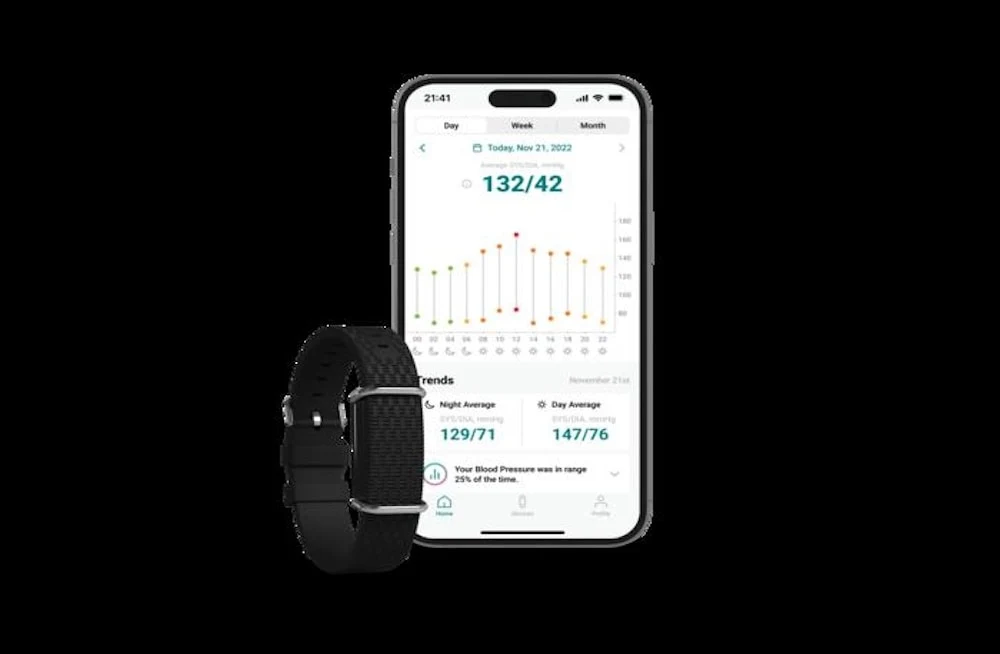A new study evaluated a novel device that automatically measures blood pressure at the wrist. This cuffless monitor uses optical sensors to continually record blood pressure, generating hundreds of readings within days. This could aid clinicians in determining cardiovascular risk and improving hypertension care. Published in Frontiers in Medicine, the study underscores the potential advancements in hypertension diagnosis, risk assessment, and management enabled by these devices.
High blood pressure, the leading risk factor for death worldwide, affects one in every two adults, yet only a quarter of those with hypertension have their condition under control. This emphasises the urgent need for innovative blood pressure management strategies. According to the study authors, cuffless devices could revolutionise hypertension management by making it easier and more reliable for patients to take blood pressure measurements outside of traditional clinical settings. These devices provide significantly more readings than traditional devices, both day and night, helping in hypertension diagnosis and guiding medication adjustments.
Clinical guidelines increasingly recommend at-home blood pressure monitoring for hypertension diagnosis and management. This is due to the inaccuracy of isolated readings taken at a clinician’s office, where some patients experience elevated blood pressure in medical settings (white coat hypertension), and others have normal readings despite high blood pressure at home (masked hypertension).
The emerging metric of time-in-target-range (TTR), which measures how often a patient’s blood pressure is within the normal range, shows promise for assessing cardiovascular risk. However, TTR requires more frequent readings than traditional blood pressure cuffs typically provide, which can be inconvenient and uncomfortable for patients.
Study authors collaborated with co-authors from Aktiia SA, a Swiss biotechnology company, to analyse over 2.2 million blood pressure readings from 5,189 subjects in Europe and the U.K. who wore an Aktiia cuffless wrist monitor. The device collected 29 readings per day, significantly more than the four per day recommended by guidelines. Over a 15-day period, the researchers obtained an average of 434 readings per patient.
By calculating TTR over a 15-day period, the researchers could stratify participants’ risk based on the percentage of readings in the target range. They compared these classifications to those generated by traditional measurement methods, which use either 24-hour or week-long daytime monitoring schedules. Traditional methods misclassified 26% and 45% of subjects, respectively, compared to the reference TTR. The study found that continual monitoring for seven days is required to achieve 90% or greater accuracy in hypertension risk classification, a frequency that may only be feasible with cuffless monitors.
Although the cuffless device studied has not yet been approved by the FDA, it has been validated in multiple studies and is available over-the-counter in Europe and the U.K. Efforts to evaluate and set standards for such devices in the U.S. are ongoing. Study authors believe that by using a cuffless device, it is possible to collect continual out-of-office blood pressure readings and use these data to calculate a new metric, time-in-target-range, which shows great promise as a predictor of risk. The use of these devices could shift the paradigm of blood pressure monitoring and hypertension management.
Source: Frontiers in Medicine
Image Credit: Atkia SA


